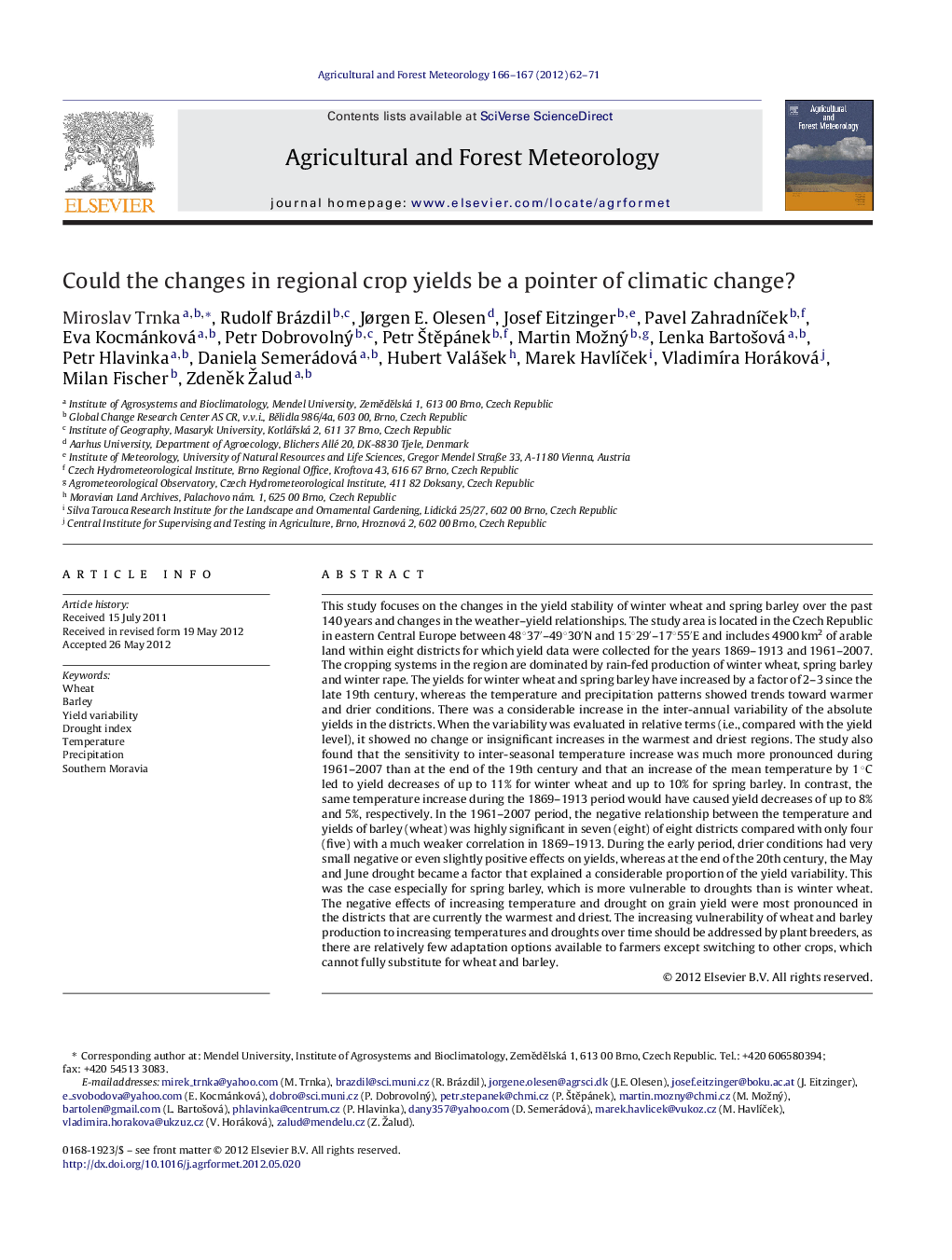| کد مقاله | کد نشریه | سال انتشار | مقاله انگلیسی | نسخه تمام متن |
|---|---|---|---|---|
| 81872 | 158355 | 2012 | 10 صفحه PDF | دانلود رایگان |

This study focuses on the changes in the yield stability of winter wheat and spring barley over the past 140 years and changes in the weather–yield relationships. The study area is located in the Czech Republic in eastern Central Europe between 48°37′–49°30′N and 15°29′–17°55′E and includes 4900 km2 of arable land within eight districts for which yield data were collected for the years 1869–1913 and 1961–2007. The cropping systems in the region are dominated by rain-fed production of winter wheat, spring barley and winter rape. The yields for winter wheat and spring barley have increased by a factor of 2–3 since the late 19th century, whereas the temperature and precipitation patterns showed trends toward warmer and drier conditions. There was a considerable increase in the inter-annual variability of the absolute yields in the districts. When the variability was evaluated in relative terms (i.e., compared with the yield level), it showed no change or insignificant increases in the warmest and driest regions. The study also found that the sensitivity to inter-seasonal temperature increase was much more pronounced during 1961–2007 than at the end of the 19th century and that an increase of the mean temperature by 1 °C led to yield decreases of up to 11% for winter wheat and up to 10% for spring barley. In contrast, the same temperature increase during the 1869–1913 period would have caused yield decreases of up to 8% and 5%, respectively. In the 1961–2007 period, the negative relationship between the temperature and yields of barley (wheat) was highly significant in seven (eight) of eight districts compared with only four (five) with a much weaker correlation in 1869–1913. During the early period, drier conditions had very small negative or even slightly positive effects on yields, whereas at the end of the 20th century, the May and June drought became a factor that explained a considerable proportion of the yield variability. This was the case especially for spring barley, which is more vulnerable to droughts than is winter wheat. The negative effects of increasing temperature and drought on grain yield were most pronounced in the districts that are currently the warmest and driest. The increasing vulnerability of wheat and barley production to increasing temperatures and droughts over time should be addressed by plant breeders, as there are relatively few adaptation options available to farmers except switching to other crops, which cannot fully substitute for wheat and barley.
► Barley/wheat yield variability and weather–yield relationships changed since 1870.
► Inter-annual yield variability of absolute regional yields increased significantly.
► Yield response to higher temperature and drought increased in recent decades.
► This development is most pronounced in the regions that are already warm and dry.
Journal: Agricultural and Forest Meteorology - Volumes 166–167, 15 December 2012, Pages 62–71